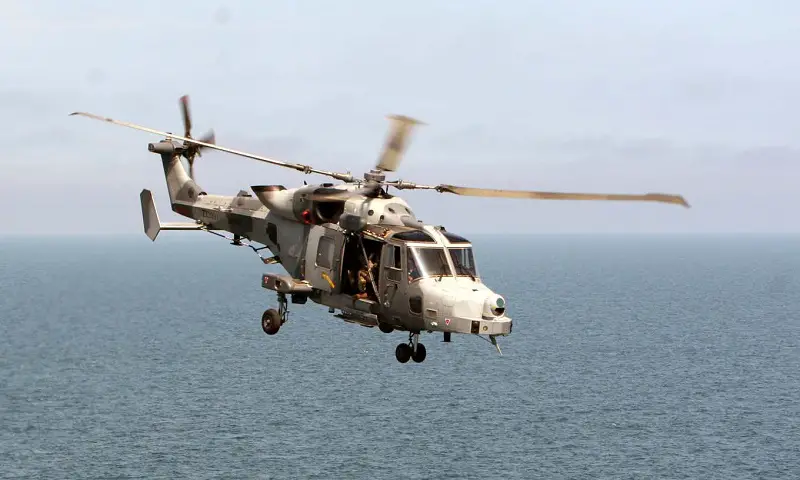The Royal Navy Commando Wildcat helicopter crews say their stint supporting the Navy’s premier amphibious deployment this spring has underscored their helicopter’s utility. 847 Naval Air Squadron, embarked in RFA Mounts Bay, joined HMS Albion for the ‘business end’ of their stint in the Baltic/North Sea, providing helicopters for Operation Rondache – the key Baltops exercise – and Anglo-Dutch joint amphibious training celebrating the 50-year link-up between the two nations. Based at RNAS Yeovilton in Somerset, the squadron is one arm of the Commando Helicopter Force, providing crucial support to the Royal Marines whenever and wherever they deploy around the world.
Even though Wildcat has been in service with the squadron for nearly a decade, crews continue to squeeze more and more out of both the helicopter itself and its suite of sensors – to the benefit of their comrades on the ground. The helicopter performs a multitude of roles, from the basics of ferrying troops and kit, to scouting for hostile forces, calling in air strikes, ‘painting’ targets with lasers for precision air strikes by missiles and laser-guided bombs, spotting for the guns of Allied warships, providing overhead cover for columns, and depositing raiding parties stealthily behind enemy lines… to name a few. Operation Rondache allowed the Wildcat team to team up with Royal Marines from 45 Commando – normally based in Arbroath, Scotland – for the annual NATO exercise focused on security in the Baltic region.
It built up to a 48-hour-long final ‘battle’ involving more than 30 ships, scores of aircraft, thousands of troops, HIMARS rocket systems and specialist raiding teams on and off the Pomeranian coast in Poland. That introduced nearly 20 NATO allies to the Commando Wildcat alongside 45 Commando. It was the task of the two Wildcats to ensure the amphibious forces got ashore safely – and once on Polish soil, to gain a firm foothold until successive waves landed reinforcements, vehicles and kit. The mission demanded crews provided combat air support, escorted either raiding craft or troops, or delivered supplies to US and Royal Marines and Italian troops on the ground who needed it – all carried out on and above a busy ‘battlefield’ teeming with personnel and air power from 19 nations with varying degrees of knowledge of English, the shared NATO tongue.

“The key takeaway is raising awareness to commanders at all levels as to how useful the Commando Wildcat is. 45 Commando were exposed to the multi-role capability of the Wildcat – it gives commanders flexibility and high levels of situational awareness. And we learned that this key message has to be pushed in order for the wider Royal Marines to fully take advantage of the key Commando Helicopter Force asset Wildcat is,” said pilot Captain Dave Lewis.
On the way home from the Baltic, the squadron particularly revelled in the opportunity to work hand-in-hand with the Dutch Korps Mariniers in and around Den Helder, building up to the golden jubilee of the Anglo-Dutch amphibious force. The Wildcat fliers used the voyage from Poland to Amsterdam to train, then decamped to De Kooy airfield in the Netherlands – the Dutch equivalent of 847’s home at Yeovilton – for the joint exercise. After just a day’s joint practice, the two marine forces laid on three days of demonstrations for a combination of VIPs and the general public, with the Wildcats showing their ability to deliver marines with pinpoint accuracy on to landing craft (via rope) – regularly performed – or dropping them into the water to swim ashore (known as helicasting) – less frequently carried out. The detachment is now back home in Somerset analysing lessons of its Baltic workout, from operating two helicopters from a flight deck where there’s only space for one (RFA Mounts Bay) which placed demands on the engineering teams, to wider integration on the battlefield with the rest of the Royal Marines and NATO allies.















